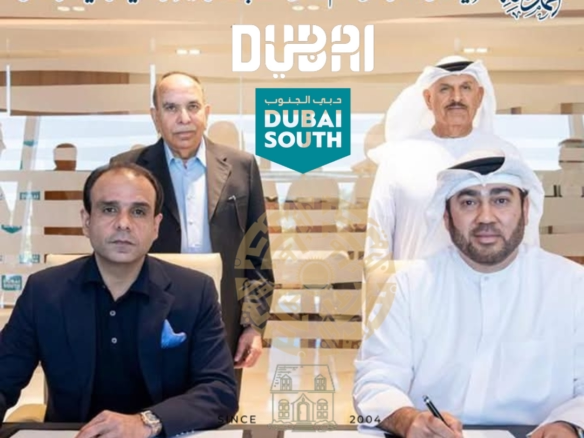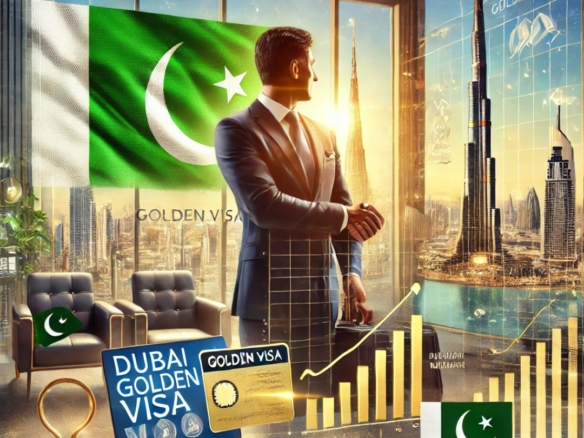Inside Bharat Mart Dubai: India’s Game-Changing Export Hub for the Middle East and Africa
Bharat Mart Dubai: India’s Strategic Trade Gateway to the Middle East
Table of Contents
TL;DR Summary
What Is Bharat Mart Dubai?
Why Bharat Mart Matters: Strategic Vision
India-UAE Trade Relations: A Historical Perspective
Indian Diamonds in Dubai: The Hidden Economic Power
73,000+ Indian Companies: A Dominant Presence in Dubai
CEPA and the $100 Billion Ambition
Bharat Mart vs Dragon Mart: A Global Trade Strategy
Pakistan-UAE Relations: A Comparative Failure Report
India vs Pakistan in the UAE: Visual Comparison
Bharat Mart: What Lies Ahead for Indian Exporters?
Bharat Mart and India’s Global Trade Goals
Bharat Mart’s Role in India’s Maritime and Logistics Strategy
How Bharat Mart Empowers Indian MSMEs
Final Thoughts & Forward-Looking Statement
TL;DR Summary
Bharat Mart is a warehousing and trading hub being developed in Dubai’s Jebel Ali Free Zone, set to open in 2026. It’s a strategic move by India to establish a permanent trade showcase in the Middle East, modeled after China’s Dragon Mart. Backed by India-UAE’s strong historical and economic ties, and guided by the CEPA agreement, Bharat Mart is expected to reshape the trade dynamics between India, the UAE, and surrounding regions. Comparatively, Pakistan-UAE relations remain unbalanced due to trade deficits, labor issues, and financial dependencies.
1. What Is Bharat Mart Dubai?
Bharat Mart is a massive infrastructure project announced during Crown Prince Hamdan bin Mohammed bin Rashid Al Maktoum’s April 2025 visit to India. The foundation was laid by Indian Prime Minister Narendra Modi and UAE Vice President Sheikh Mohammed bin Rashid Al Maktoum during the 2024 World Governments Summit.
Key Facts:
Location: Jebel Ali Free Zone (JAFZA), Dubai
Space: Over 100,000 sq meters
Features: Showrooms, warehouses, hospitality services
Developer: DP World
Projected Opening: 2026
Modeled after China’s Dragon Mart, Bharat Mart is tailored for Indian exporters, enabling them to reach markets in Africa, Europe, and the Middle East with ease.
2. Why Bharat Mart Matters: Strategic Vision
This isn’t just another trade center. Bharat Mart is a signal of India’s rising economic diplomacy.
Strategic Benefits:
Access to 3.5 billion global consumers
Leverages Dubai’s world-class port and airport infrastructure
Reduces export hurdles for Indian SMEs
Supports India-UAE’s CEPA implementation goals
It also bridges the logistical and infrastructural gap for Indian exporters who often lack a permanent overseas footprint.
3. India-UAE Trade Relations: A Historical Perspective
Trade between India and the UAE is centuries old — from spices and pearls to oil and tech today.
Milestones:
1972: UAE opens embassy in India
2015: PM Modi’s visit launches Comprehensive Strategic Partnership
2022: CEPA signed — slashes tariffs, boosts access
2023-2024: Deepening I2U2 collaboration (India-Israel-UAE-USA)
Today, India is UAE’s second-largest trade partner, with bilateral trade reaching $85 billion in 2022–23.
4. Indian Diamonds in Dubai: The Hidden Economic Power
Dubai is a major global diamond hub, and India dominates the polishing industry — refining 90% of the world’s diamonds.
Why It Matters:
Rough diamonds sourced from Africa
Polished in India, re-exported via Dubai
2019 diamond trade linked to Indian firms exceeded $23 billion
Dubai’s Almas Tower and DMCC are now home to hundreds of Indian diamond merchants, playing a crucial role in high-value bilateral trade.
5. 73,000+ Indian Companies: A Dominant Presence in Dubai
As of 2024, over 73,000 Indian companies are registered in Dubai:
36,595 in trading/services
17,631 in real estate/business
12,281 in construction
This dominance is due to Dubai’s tax incentives, free zones, and proximity to India. Bharat Mart is the natural next step to consolidate this advantage.
6. CEPA and the $100 Billion Ambition
India-UAE’s Comprehensive Economic Partnership Agreement (CEPA) was signed in 2022, and it’s a game-changer.
Key Benefits:
Tariff-free trade on 80% of goods
Boosted trade in gems, pharma, and textiles
Aims for $100 billion in non-oil trade by 2030
CEPA also includes digital trade, IP protections, and logistics facilitation — creating fertile ground for Bharat Mart’s success.
7. Bharat Mart vs Dragon Mart: A Global Trade Strategy
| Aspect | Dragon Mart (China) | Bharat Mart (India) |
|---|---|---|
| Launch Year | 2004 | 2026 (Planned) |
| Focus | Retail | Retail + Warehousing |
| Target Market | ME + Africa | ME + Africa + Europe |
| Business Support | Minimal | Extensive (B2B, expos, logistics) |
India is not just copying China — it’s building a more integrated, service-rich platform for sustained global trade.
8. Pakistan-UAE Relations: A Comparative Failure Report
While India deepens trade integration, Pakistan’s relationship with the UAE shows strain.
Key Issues:
Trade Deficit: $3.42B gap in 2023 (Exports $1.4B vs Imports $4.82B)
Loan Dependence: $3B pledged in 2023, with rollovers
Labor Abuse Concerns: Kafala system reports include wage theft and passport seizures
No CEPA Yet: Talks ongoing, no progress
Despite cultural closeness, economic ties lack substance and long-term planning.
9. India vs Pakistan in the UAE: Visual Comparison
| Metric | India | Pakistan |
|---|---|---|
| Bilateral Trade (2023) | $85B | $6.22B |
| CEPA Status | Signed & active | Under negotiation |
| Companies in UAE | 73,114 | N/A |
| Labor Rights Issues | Minimal | Significant (Kafala abuse) |
| Dependency on Loans | Low (FDI flows instead) | High (Rollovers frequent) |
10. Bharat Mart: What Lies Ahead for Indian Exporters?
Bharat Mart will benefit Indian exporters across sectors:
Textiles & Handicrafts
Ayurveda & Wellness
Electronics & Auto Components
Agro and Processed Foods
It will offer logistics support, display infrastructure, and government-backed services, making it easier for even small exporters to reach global buyers.
11. Bharat Mart and India’s Global Trade Goals
This initiative aligns with India’s key economic strategies:
Make in India: Supports manufacturing exports
Digital India: Enables digital inventory and smart payments
Startup India: Opens global markets for SMEs
ODOP: Promotes regional and artisanal products globally
It embodies India’s shift from being just a sourcing economy to a global brand exporter.
12. Bharat Mart’s Role in India’s Maritime and Logistics Strategy
Bharat Mart isn’t a standalone idea — it’s part of India’s broader trade corridor vision.
Strategic Integrations:
Sagarmala: Coastal port development
India-Middle East-Europe Corridor (IMEC): Boosts UAE-EU connectivity
Air Cargo: Taps Al Maktoum International Airport
With these connections, Bharat Mart becomes India’s offshore warehouse, cutting freight costs and streamlining supply chains.
13. How Bharat Mart Empowers Indian MSMEs
MSMEs often lack the resources to go global. Bharat Mart levels the playing field:
Shared showrooms & warehouses
Translation, compliance, and customs services
Access to buyers from the Gulf, Europe, and Africa
Easy payment integration via UPI & cross-border fintech platforms
Government programs like MAI (Market Access Initiative) will subsidize participation, giving grassroots exporters global exposure.
14. How Bharat Mart Empowers Indian MSMEs
Micro, Small, and Medium Enterprises (MSMEs) form the backbone of India’s exports but often struggle with:
Lack of international visibility
High logistics costs
Language and compliance barriers
Bharat Mart offers a solution by:
Providing ready-to-use showrooms and warehouses
Hosting buyer-seller meets, expos, and B2B interactions
Offering shared services like customs support, digital catalogs, and marketing
Sectors like leather goods, ayurveda, handlooms, and auto parts are expected to thrive. Government incentives under schemes like MAI (Market Access Initiative) will make it easier for MSMEs to launch in Bharat Mart.
Additionally, Bharat Mart can integrate with India’s UPI and digital commerce ecosystem, enabling smoother B2B payments and cross-border settlements. This financial inclusion will empower exporters who previously lacked the resources to establish an overseas presence.
15. Final Thoughts & Forward-Looking Statement
Bharat Mart is more than a physical space—it represents a transformative approach to India’s global trade strategy. By combining infrastructure, policy, and diplomacy, it positions India to lead in South-South trade.
As India rises as a global economic power, platforms like Bharat Mart will become central to its global economic diplomacy toolkit. While challenges remain, especially in operational coordination, the direction is clear: India is building not just trade deals, but trade infrastructure.
Meanwhile, Pakistan must address its structural weaknesses, renegotiate its trade terms, and improve worker protections to remain competitive in the Gulf. Until then, Bharat Mart stands as a symbol of India’s growing economic and geopolitical influence.



